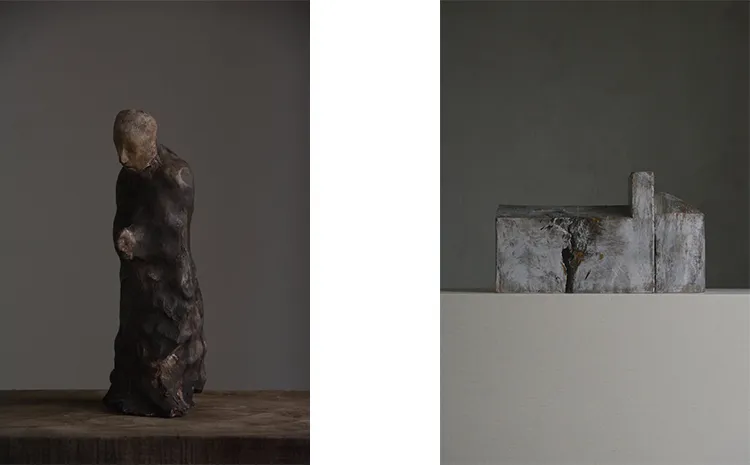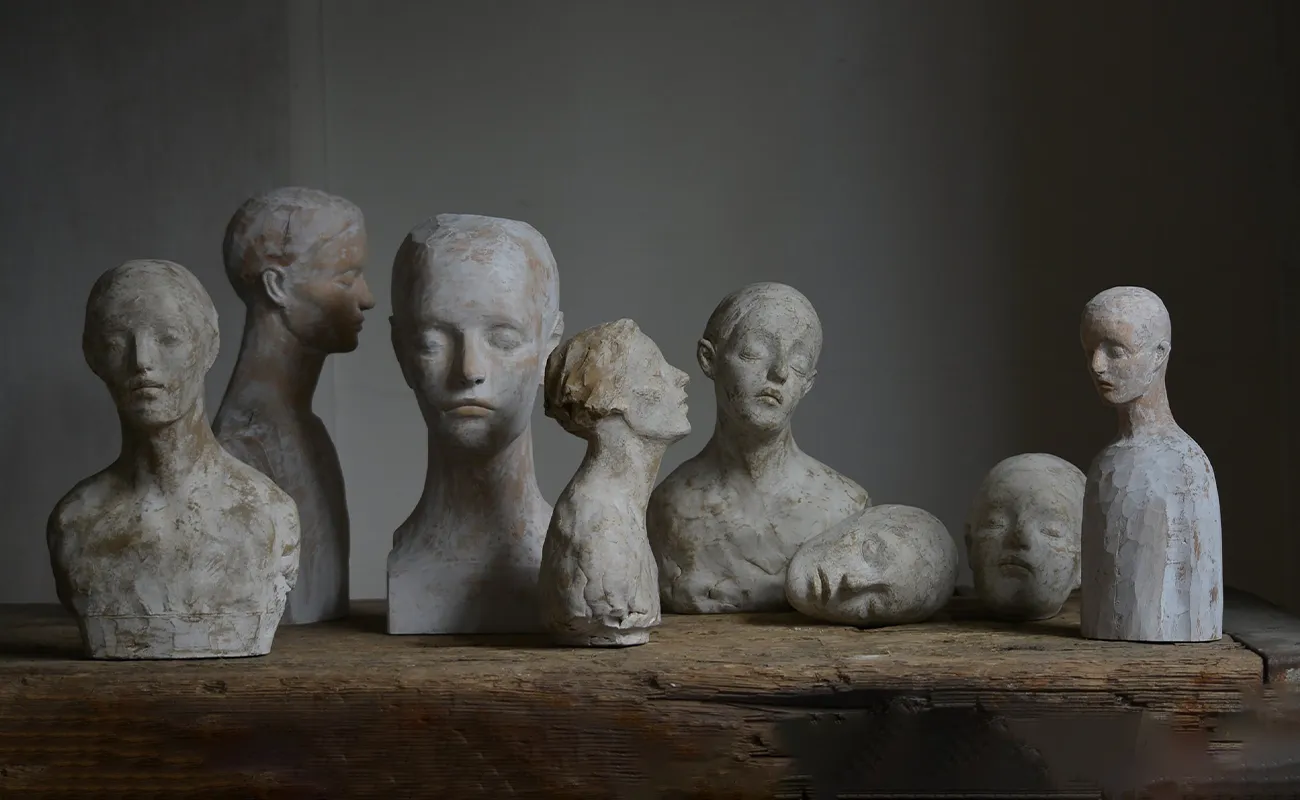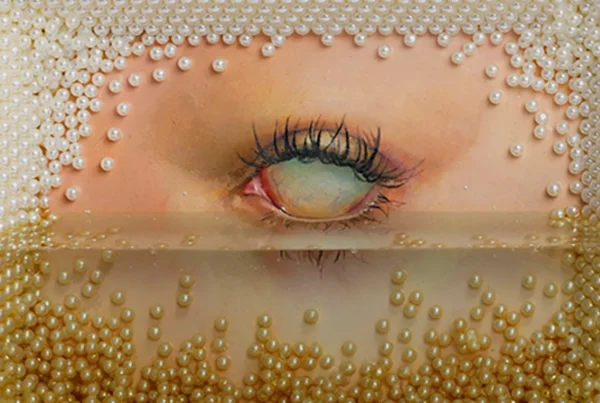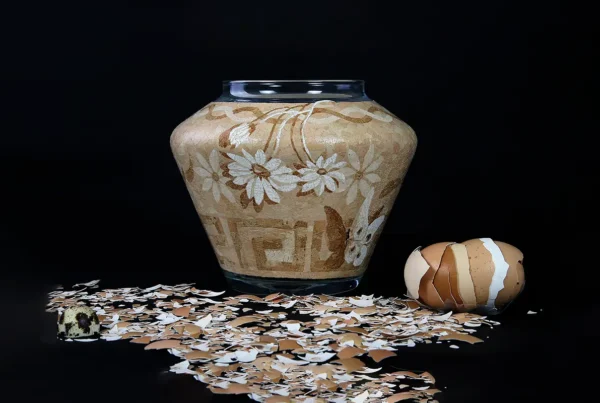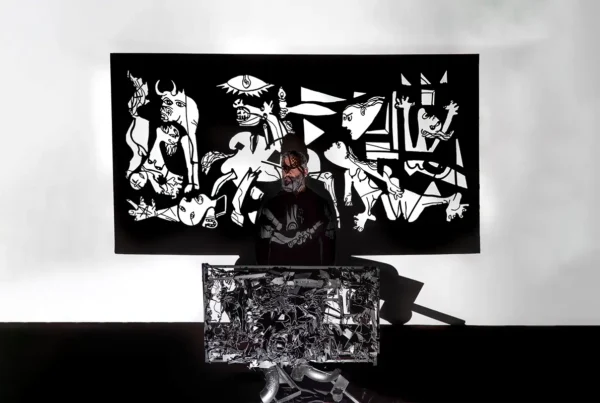Takatoshi Kuronuma: The Sculptor Shaping Silence
Takatoshi Kuronuma’s journey into the world of sculpture is as intricate as the works he creates. Born in 1985 in Atsugi, a city in Japan’s Kanagawa Prefecture, Kuronuma did not follow a traditional artistic path from the outset. After completing his studies in architecture at design school, he took a practical turn, working as a foreman on construction sites. However, during this time, his attention was gradually drawn to the art of woodcarving. What began as a personal exploration eventually became a life-altering decision, leading him to leave his construction job and pursue woodworking in earnest at a vocational school.
In 2010, after honing his skills, Kuronuma took the bold step of becoming a freelance sculptor. His first solo exhibition followed swiftly in 2011, marking the beginning of a career defined by quiet persistence and a deeply personal artistic vision. He opened his own studio in his hometown of Atsugi in 2017, and since then, has continued to study and refine his craft, focusing on the creation of minimalist sculptures that explore themes of humanity, nature, and time. His dedication to his art has made him a distinctive voice in the field of contemporary sculpture, particularly in Japan.
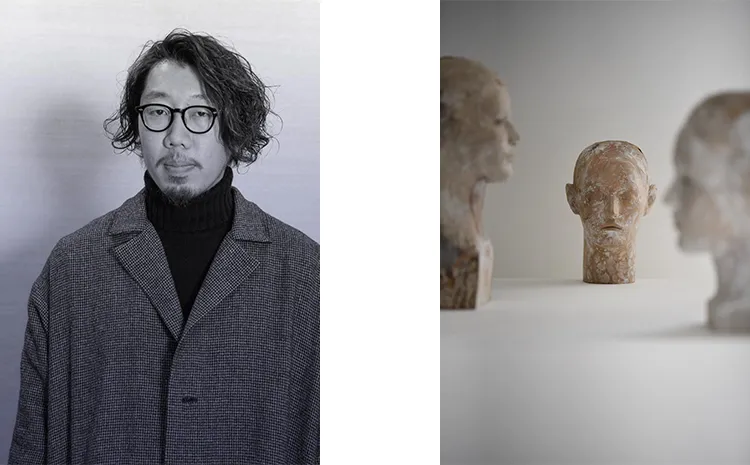
Takatoshi Kuronuma: Sculpting the Essence of Existence
At the heart of Kuronuma’s sculptures is his unwavering desire to capture the essence of the human experience. He speaks of his work as an effort to “reveal the image of a person,” but the figures he creates are far from conventional portrayals. His sculptures do not focus on likeness or identity; instead, they seem to emerge from a deeper, more universal source. Kuronuma strives to present figures that embody both the fragility and strength of human existence, giving life to statues that appear weathered, vulnerable, and timeless. His intention is not just to represent people but to convey the unspoken moments in which humanity and nature converge.
Kuronuma’s figures often appear isolated, their faces bearing serene, contemplative expressions that reflect an inner solitude. He deliberately avoids overt detail, choosing instead to strip his subjects down to their most essential forms. These figures seem to occupy a space between the spiritual and the physical, their surfaces textured in a way that suggests both their earthly origin and their transcendence of time. His work stands as a meditation on imperfection, as he strives to depict statues that, though flawed, retain an almost sacred presence. Kuronuma’s approach invites viewers to look beyond the surface and to contemplate the deeper meanings that his sculptures evoke.
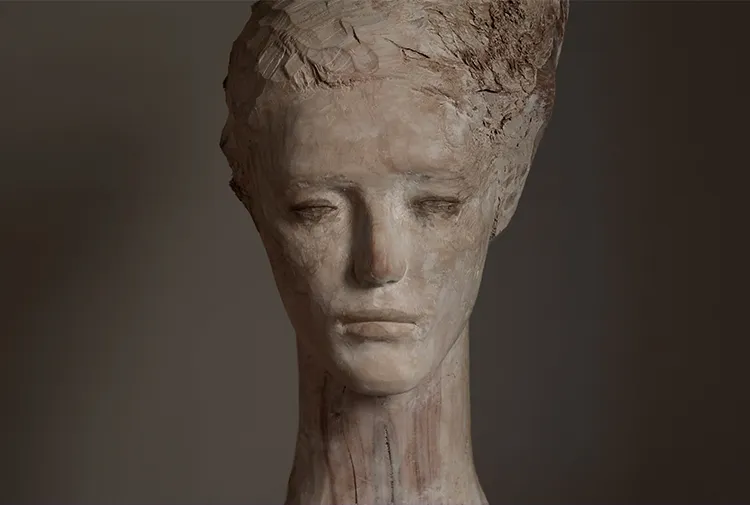
Textures of Time: The Tactile Power of Kuronuma’s Sculptures
One of the most striking aspects of Takatoshi Kuronuma’s work is the way his sculptures convey a sense of time. Through his distinctive use of materials and textures, Kuronuma creates pieces that appear both ancient and contemporary, rooted in tradition yet speaking to the present moment. The surfaces of his sculptures are rough and weathered, as if eroded by the elements or shaped by the passage of time. This tactile quality gives his work an artifact-like appearance, evoking relics from a distant past or fragments of a long-forgotten civilization. The muted tones he employs—soft whites, grays, and ochres—further enhance this sense of timelessness.
In many ways, Kuronuma’s sculptures invite a slow, deliberate viewing. The rough, unfinished quality of the wood forces viewers to engage with the materiality of the work, tracing the subtle imperfections and variations in texture. These marks are a testament to the artist’s hand, a visible record of the process through which each piece was created. Rather than aiming for a polished or flawless surface, Kuronuma embraces the rawness of his materials, allowing the wood’s natural grain and texture to inform the final form of his sculptures. This focus on materiality connects his work to the natural world, creating a dialogue between the organic qualities of the wood and the human figures he carves from it.
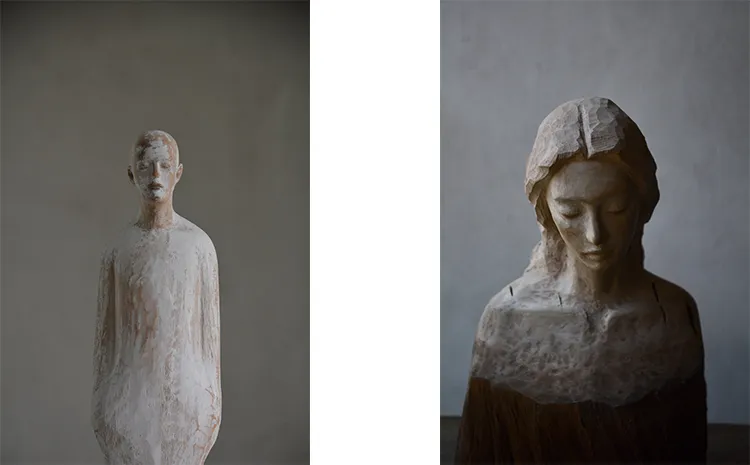
Takatoshi Kuronuma: Between Humanity and Nature
Kuronuma’s sculptures sit at the delicate intersection of humanity and nature, where the line between the two begins to blur. This theme runs through much of his work, particularly in his depictions of female figures, which he carves with a simplicity that enhances their connection to the natural world. He captures the femininity and purity of his subjects through minimal gestures—the curve of a brow, the quiet tension of a flower bouquet held in delicate hands. These details, though subtle, express a deep reverence for both the human form and the material from which it is carved. The flowing patterns of the wood grain seem to breathe life into the figures, their twists and turns reflecting the organic process of creation.
This interplay between nature and humanity is further emphasized by the weathered textures and muted tones that dominate his sculptures. Kuronuma’s use of soft, earthy colors lends his figures an ancient, almost sacred aura, as though they are timeless beings who have endured the slow erosion of the natural world. His works often evoke a sense of melancholy or solitude, yet they also possess a quiet strength that speaks to the resilience of the human spirit. By merging the natural and the human in his sculptures, Kuronuma creates a contemplative space where viewers can reflect on the fragility and endurance of life.
